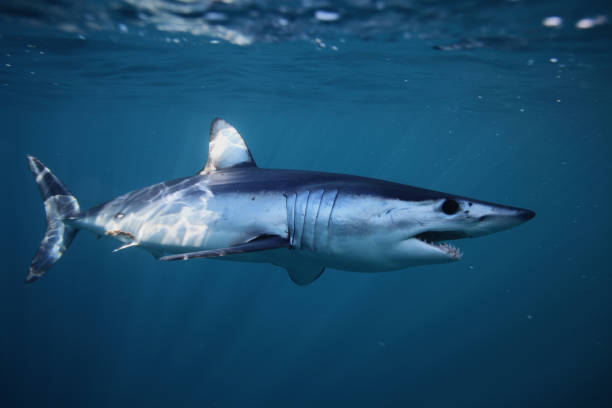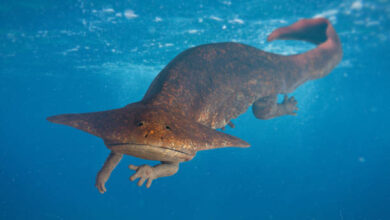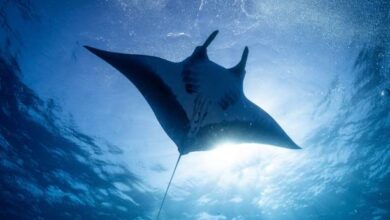How many species of cartilaginous fish are there?

The ocean is home to an endless variety of life forms and is a beautiful tapestry of biodiversity. Fish classified as cartilaginous, a diverse collection of species distinguished by their flexible, boneless skeletons, are among the most intriguing families of aquatic animals. However, the precise number of cartilaginous fish species is known? It’s time to explore the world of chimaeras, sharks, rays, and their extinct relatives.
Overview of Carthaginians Fish
Introduce yourself to the fascinating family of fish known as cartilaginous fish, or Chondrichthyes. What distinguishes them? Their pliable skeletons, entirely made of cartilage instead of bone, are what make them among the most interesting inhabitants of the ocean. Counting an astounding 1,200 species, this group presents an enthralling image of aquatic diversity.
There is a huge range of shapes, sizes, and habits within this group, from the sharks and rays that most of us are familiar with to the less well-known but no less fascinating chimaeras, commonly referred to as ghost sharks. The treasures that exist beneath the seas are genuinely showcased by this aquatic zoo. Every species and person adds something special to the enormous undersea world.
So grab a breath and join us as we set off on an exciting trip to solve the secrets of cartilaginous fish!
In order to fully enjoy these kinds of cartilaginous marvels, one has to go below the surface, where the sun’s rays hardly reach. So join us as we explore the enigmatic inhabitants of the ocean’s darkest recesses. Among the many species of cartilaginous fish, we will see amazing adaptations and strange beauties. Prepare to discover a strange and intriguing universe that is a tribute to the creative force of nature. Get ready to go deeper into the investigation of the remarkable biology of cartilaginous fish, from their astounding electroreception abilities to the torpedo-shaped bodies of some species.
As we immerse ourselves in comprehending their crucial function in marine ecosystems, stay tuned. Learn how the variety of cartilaginous fish species adds to the utility and richness of marine life. These underwater treasures provide us with a distinct viewpoint on marine biodiversity as they function as scavengers, apex predators, and filter feeders.
Sharks: The Sea’s Highest Predators
Welcome to the fascinating world of sharks, a varied collection of about 500 species living under the fin. These formidable predators, who rule the top of the food chain, are essential to maintaining the health and balance of marine ecosystems. Shark diversity is significantly wider and more fascinating than one may think, ranging from the powerful Great White to the tiny Dwarf Lantern shark.
To learn more about some of these diverse species, let’s go down to the bottom. Think about the largest fish in the world, the whale shark. Instead of being a normal predator, this gentle giant is a filter feeder, consuming small fish and plankton. Then there’s the amazing Hammerhead, which has an almost 360-degree range of vision due to its peculiar head shape, making it ideal for hunting prey. But in the world of sharks, power and size are not the only factors. Fascinating survival techniques have evolved in many species.
For example, the appropriately named Goblin shark has the amazing and sometimes unsettling ability to lengthen its jaw in order to seize prey.
There is incredible variation among sharks. It’s a world full of amazing animals and adaptations that are frequently misinterpreted. Nonetheless, they are an essential member of the cartilaginous fish family and perform a vital function in our seas. The next time you consider sharks, keep in mind that they are a diverse, important, and utterly interesting species of marine life, not just ferocious predators.
Given that there are more than 500 species of cartilaginous sharks, each with distinct characteristics, behaviors, and evolutionary histories, this diversity is especially noteworthy. We still have a lot of interesting and rare species to discover, so let’s go deeper. The Saw shark is one such fascinating cartilaginous shark species, distinguished by its unusually long, saw-like snout that it uses to attack its food.
The Tiger shark, which gets its name from its unique striped pattern, is another remarkable species that demonstrates the amazing diversity of evolution and adaptability within this oceanic family. The Mako shark, which is recognized for its exceptional agility and swift swimming speed, is one of the many kinds of cartilaginous sharks that further demonstrate this remarkable diversity.
Its crescent-shaped tail and torpedo-shaped body make it ideal for swift, decisive action in the deep. The Whale shark, a different kind of cartilaginous shark, is the opposite, having a massive, heavy body that makes it perfect for lazy expeditions in quest of minuscule meals. This merely serves to illustrate how diverse and full of opposites the shark world is, in addition to its constant, universal traits.
Skates and Rays: Flat and Entertaining
Explore the fascinating world of skates and rays, a significant subgroup of the cartilaginous fish family that includes about 600 different species. These aquatic marvels exhibit a stunning variety of forms and sizes, distinguished by their flat bodies. Imagine witnessing a magnificent Manta ray soaring through the ocean with its enormous wings flapping like a bird’s.
Rays are praised for their amazing adaptations, which make them underwater marvels. Consider the electric radiation, for example. These animals have specific organs that can shock their prey with electricity. This makes them useful for deterring prospective attackers or stunning prey.

Skates are at the opposite end of the range. These animals that live on the ocean floor usually have their nests in the sandy soil. Their distinctive trait, which acts as a barrier against predators, is their sharp defensive spines.
A striking example of the many adaptations that have allowed cartilaginous fish to flourish in a variety of marine environments is given to us by both rays and skates. Every species that we come across adds a distinct brush to the enormous canvas of marine biodiversity as we delve further into their world. Recall that every ray and every skate, regardless of size, contributes a distinct chapter to the epic tale of cartilaginous fish.
Chimaeras: The Enigmatized Underwater Residents
Dwelling deep inside the water are the strange, lesser-known members of the Chondrichthyes family, known as chimaeras, which are sometimes referred to as “ghost sharks.” These deep-sea inhabitants, of which there are thought to be about 50 species, captivate us with their unusual forms and are a common source of fascination and mystery. Chimaeras are not dangerous to people, despite what their name and appearance might imply. Instead, they prefer to live their largely solitary lives in the calmer, darker depths of the ocean.
They are distinguished from their cartilaginous cousins by their peculiar characteristics and adaptations, including as their whip-like tail and elongated, soft bodies. Their characteristic venomous spine, which they utilize to defend themselves from predators, is located directly in front of the dorsal fin. Their anatomy is fascinating to study; some even have retractable sexual appendages on their foreheads. Even with these peculiarities, they continue to be the most mysterious cartilaginous fish because of their elusiveness and secretive lifestyle, which make it difficult for scientists to do in-depth research on them.
The ghost sharks serve as a sobering reminder of the huge, uncharted world that lies beneath the surface as we continue to unravel the mysteries of the ocean. Our knowledge of marine biodiversity and the complex adaptations life has evolved to survive in some of the harshest environments on Earth is enhanced by every discovery made in their realm.
Endangered Species: A Look Back at the Past
Without honoring the species that formerly inhabited the great oceanic stretches but are no longer with us, the history of cartilaginous fish cannot be fully told. These extinct cartilaginous fish provide us with a glimpse into the marine life of bygone eras, ranging from massive predators to the more elusive, lesser-known species.
The Megalodon is arguably the most well-known of these extinct creatures. Millions of years ago, this enormous shark, whose name literally translates to “big tooth,” ruled the waters. The Megalodon was an apex predator whose very existence sends shivers down the spine. Its fangs could grow up to seven inches in length, and its estimated size was three times greater than that of a Great White.
But the Megalodon is just the beginning of our historical exploration. Additionally, the existence of chimaeras and ancient rays is revealed by fossil records. The story of evolution, adaptability, and the rise and fall of species across time is narrated by these extinct cartilaginous fish.

Every fossil discovered is a treasure, revealing details about the species’ habitat, manner of life, and position in the food chain of the ocean. They offer important insights on the ways in which marine life has been impacted by changes in the oceanic environment over millions of years.
The disappearing cartilaginous fish species are a sobering reminder of the fleeting essence of existence and the constantly shifting fabric of marine biodiversity. Even though they are no longer with us, their legacy endures because of the amazing stories they have shared from deep within.
Risks to Populations of Cartilaginous Fish
Numerous distinct species can be found in the amazing underwater world of cartilaginous fish, which is essential to preserving the harmony and health of marine ecosystems. But their world is being besieged. These amazing animals’ main enemies nowadays are habitat destruction, overfishing, and climate change. The effects on sharks are especially worrisome.
Sharks have a low birth rate, moderate growth, and long lifespans, which makes them particularly vulnerable. Due to the catastrophic mix of these conditions, many shark species are now classified as endangered. Skates and rays are also susceptible to these dangers. Because of their preferred environment, they are in close proximity to human impacts, and their flattened bodies make them ideal prey for bottom trawling. The deep-sea inhabitants, chimaeras, are less affected because of their isolated habitats.
However, human activity does not completely shield the deep ocean from it. Their survival may be seriously threatened by deep-sea fishing and mining. It is our duty as stewards of the earth to address these threats. To ensure the continued existence of these fascinating species, conservation efforts are essential. We have a responsibility to make sure that upcoming generations can appreciate the richness and diversity of these amazing marine animals.
In summary: The Vast Varieties Found in Cartilaginous Fish
Since we started this investigation into cartilaginous fish, we have been astounded by more than 1,200 distinct species, each of which is essential to the delicate balance of the marine environment. In addition to arousing our curiosity, the remarkable diversity of sharks, rays, chimaeras, and extinct relatives has highlighted the immense richness of our oceans.
We keep learning amazing facts about these marvels without bones and their unique adaptations with every expedition into the water. The world of cartilaginous fish is an endless source of wonder, ranging from the fearsome sharks to the elegant rays, and from the secretive chimaeras to the long-extinct giants. It’s critical to keep in mind our responsibility to protect these species and their habitats as we navigate the ever shifting deep blue mosaic.
Cheers to the ongoing exploration and preservation of these fascinating marine animals, which serve as emblems of the fascinating variety found within our seas!



